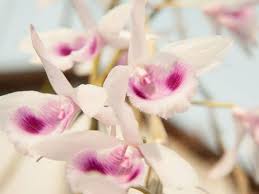# Phalaenopsis Orchids and the Integration of Modern Technology in Cultivation

## Table of Contents
1. **Introduction to Phalaenopsis Orchids**
2. **The Importance of Phalaenopsis Orchids in Horticulture**
3. **Modern Cultivation Techniques**
– 3.1. Tissue Culture Technology
– 3.2. Hydroponics and Aquaponics
4. **Precision Agriculture in Orchid Cultivation**
– 4.1. Environmental Monitoring Systems
– 4.2. Automated Growing Systems
5. **Biotechnology in Phalaenopsis Orchid Breeding**
– 5.1. Genetic Engineering
– 5.2. Marker-Assisted Selection
6. **Sustainable Practices in Phalaenopsis Cultivation**
– 6.1. Organic Fertilization and Pest Control
– 6.2. Water Conservation Techniques
7. **Digital Tools and Data Analysis in Orchid Farming**
– 7.1. Mobile Apps and Software
– 7.2. Data Analytics for Crop Management
8. **The Future of Phalaenopsis Orchid Cultivation**
9. **Conclusion**
—
## 1. Introduction to Phalaenopsis Orchids
Phalaenopsis orchids, commonly known as moth orchids, are among the most popular and widely cultivated orchids worldwide. Their stunning blooms and unique characteristics make them highly sought after by both amateur and professional growers. These orchids are native to tropical and subtropical regions of Asia and have adapted well to cultivation in various environments. As the demand for Phalaenopsis orchids continues to rise, the integration of modern technology into their cultivation has become increasingly important. This article explores how modern techniques and innovations are transforming the way Phalaenopsis orchids are grown and maintained.
—
## 2. The Importance of Phalaenopsis Orchids in Horticulture
Phalaenopsis orchids play a significant role in the horticultural industry, contributing to both the aesthetic and economic value of plants. They are commonly used in floral arrangements, decorative displays, and as gifts, making them a popular choice among consumers. The cultivation of Phalaenopsis orchids has also led to the development of numerous hybrid varieties, each with unique colors, sizes, and shapes.
The global market for Phalaenopsis orchids has expanded, driven by consumer demand for exotic and beautiful plants. As a result, growers are constantly seeking new and efficient methods to improve production, quality, and sustainability. The integration of modern technology in orchid cultivation is essential to meet these demands and enhance the overall success of Phalaenopsis orchids in the horticultural market.
—
## 3. Modern Cultivation Techniques
### 3.1. Tissue Culture Technology
Tissue culture technology has revolutionized the way Phalaenopsis orchids are propagated and cultivated. This technique involves the growth of plant cells, tissues, or organs in a controlled, sterile environment. Tissue culture allows for the rapid production of disease-free orchid plants with desirable traits.
By utilizing small tissue samples from parent plants, growers can produce thousands of identical clones in a relatively short time. This method not only ensures high-quality plants but also preserves the genetic traits of the original plant. Recent advancements in tissue culture protocols have improved the efficiency and success rates of orchid propagation, making it a preferred method for many commercial growers.
### 3.2. Hydroponics and Aquaponics
Hydroponics and aquaponics are modern cultivation methods gaining popularity in the orchid-growing community. These soilless systems allow for the precise control of nutrients, water, and environmental conditions, resulting in healthier and more productive plants.
– **Hydroponics** involves growing orchids in nutrient-rich water solutions, providing all the essential elements they need for growth. This method can lead to faster growth rates and higher yields compared to traditional soil-based cultivation.
– **Aquaponics** combines hydroponics with aquaculture, creating a sustainable ecosystem where fish waste provides organic nutrients for the plants while the plants help filter and purify the water for the fish. This symbiotic relationship benefits both the orchids and the aquatic life, promoting sustainability in horticulture.
—
## 4. Precision Agriculture in Orchid Cultivation
### 4.1. Environmental Monitoring Systems
Precision agriculture involves the use of technology to monitor and manage agricultural practices more efficiently. In orchid cultivation, environmental monitoring systems play a crucial role in optimizing growth conditions. These systems utilize sensors and data loggers to track variables such as temperature, humidity, light intensity, and soil moisture levels.
By continuously monitoring these environmental factors, growers can make data-driven decisions to adjust conditions as needed. For instance, if humidity levels drop below the ideal range for Phalaenopsis orchids, growers can take immediate action to increase humidity, promoting healthier plant growth and preventing stress-related issues.
### 4.2. Automated Growing Systems
Automated growing systems are becoming increasingly popular in orchid cultivation. These systems use technology to automate various processes, including irrigation, fertilization, and environmental control. Automated irrigation systems, for example, can deliver the right amount of water at specified intervals, reducing the risk of overwatering or underwatering.
Furthermore, automated climate control systems can adjust temperature and humidity levels based on real-time data, creating optimal growing conditions for Phalaenopsis orchids. By reducing the reliance on manual labor and minimizing human error, automated growing systems enhance efficiency and productivity in orchid cultivation.
—
## 5. Biotechnology in Phalaenopsis Orchid Breeding
### 5.1. Genetic Engineering
Biotechnology has opened new avenues for improving Phalaenopsis orchids through genetic engineering. Scientists are exploring the potential of genetically modifying orchids to enhance traits such as flower color, size, and resistance to diseases. For instance, researchers have successfully engineered Phalaenopsis orchids to express specific genes responsible for vibrant flower colors, resulting in new and unique cultivars.
Genetic engineering not only allows for the creation of visually appealing orchids but also aids in developing plants that can withstand environmental stresses. This approach holds promise for improving the resilience and adaptability of Phalaenopsis orchids in the face of changing climate conditions.
### 5.2. Marker-Assisted Selection
Marker-assisted selection (MAS) is a powerful breeding technique that utilizes molecular markers to identify and select plants with desirable traits. By analyzing the genetic makeup of Phalaenopsis orchids, breeders can efficiently select parent plants for hybridization, accelerating the breeding process.
Recent studies have demonstrated the effectiveness of MAS in enhancing traits such as disease resistance, flower quality, and growth rate. This approach allows breeders to make informed decisions based on genetic information, leading to the development of superior Phalaenopsis hybrids that meet consumer preferences and market demands.
—
## 6. Sustainable Practices in Phalaenopsis Cultivation
### 6.1. Organic Fertilization and Pest Control
Sustainable practices are essential for ensuring the long-term success of Phalaenopsis orchid cultivation. Many growers are turning to organic fertilization and pest control methods to reduce their environmental impact. Organic fertilizers, derived from natural sources, provide essential nutrients while minimizing the risk of chemical buildup in the soil.
Additionally, integrated pest management (IPM) strategies focus on using beneficial insects and natural repellents to control pests, reducing the need for synthetic pesticides. By adopting sustainable practices, growers can maintain healthy orchids while preserving the surrounding ecosystem.
### 6.2. Water Conservation Techniques
Water conservation is a critical aspect of sustainable orchid cultivation. Modern techniques such as drip irrigation and rainwater harvesting can significantly reduce water usage while providing adequate moisture to the plants. Drip irrigation systems deliver water directly to the root zone, minimizing evaporation and runoff.
Rainwater harvesting involves collecting and storing rainwater for irrigation purposes, providing an eco-friendly source of water for Phalaenopsis orchids. Implementing these techniques not only conserves water but also reduces the overall cost of cultivation.
—
## 7. Digital Tools and Data Analysis in Orchid Farming
### 7.1. Mobile Apps and Software
The advent of digital tools has transformed the way orchid growers manage their operations. Mobile apps and software programs designed for horticulture allow growers to track plant growth, monitor environmental conditions, and manage resources efficiently. These tools provide valuable insights into the health and performance of Phalaenopsis orchids, enabling growers to make informed decisions.
Some applications also offer features such as plant disease identification, pest control recommendations, and reminders for fertilization schedules. By utilizing these digital tools, growers can optimize their cultivation practices and improve overall productivity.
### 7.2. Data Analytics for Crop Management
Data analytics plays a vital role in modern orchid farming. By collecting and analyzing data on various aspects of cultivation, growers can identify trends and make data-driven decisions to enhance crop management. For example, analyzing historical data on environmental conditions can help growers understand the ideal growing conditions for Phalaenopsis orchids, leading to improved yields and quality.
Furthermore, predictive analytics can forecast potential issues, such as pest infestations or nutrient deficiencies, allowing growers to take preventive measures before problems arise. By leveraging data analytics, orchid growers can optimize their operations and achieve greater success in cultivating Phalaenopsis orchids.
—
## 8. The Future of Phalaenopsis Orchid Cultivation
The future of Phalaenopsis orchid cultivation looks promising, thanks to the ongoing advancements in technology and research. As growers continue to integrate modern practices, the potential for innovation in orchid cultivation is limitless. The use of biotechnology, precision agriculture, and sustainable practices will play a pivotal role in shaping the future of Phalaenopsis orchids.
Furthermore, as consumer preferences evolve, the demand for unique and high-quality orchid varieties will continue to drive innovation in breeding and cultivation techniques. By embracing technology and sustainability, growers can ensure the long-term success of Phalaenopsis orchids while contributing to the preservation of these beautiful plants.
—
## 9. Conclusion
Phalaenopsis orchids represent a significant aspect of the horticultural industry, and the integration of modern technology in their cultivation is transforming how they are grown and
maintained. From tissue culture techniques to precision agriculture and sustainable practices, advancements in technology are enhancing the efficiency and quality of Phalaenopsis orchid production.
As growers adapt to changing consumer preferences and environmental challenges, the combination of innovative practices and sustainable approaches will play a crucial role in the future of orchid cultivation. By embracing modern technology, the horticultural community can ensure the continued appreciation and success of Phalaenopsis orchids for generations to come.

